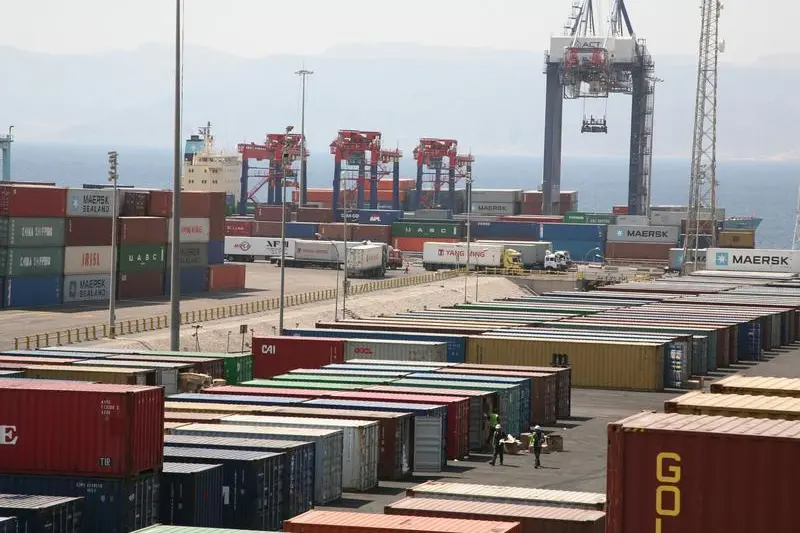PHOTO
AMMAN — The value of total exports in Jordan during the first nine months of 2019 stood at JD4.356 billion, marking an 8.1-per cent increase compared with the same period in 2018, while exports of national goods increased by 7.8 per cent to reach JD3.687 billion, according to figures from the Department of Statistics (DoS).
The value of reexported goods in the first nine months of 2019 reached JD669.3 million, increasing by 9.4 per cent compared with the first three quarters of 2018.
In the same comparison period, imports decreased to around JD10.1 billion, at a rate of 5.3 per cent, according to DoS figures.
The trade balance deficit, which is the difference between the value of imports and total exports, stood at JD5.743 billion, decreasing during the first nine months of this year by 13.4 per cent, compared to the same period with 2018.
In regards to the most significant goods exported during the first three quarters of this year, national exports of clothing and garments increased by 10.8 per cent, raw potash by 14.4 per cent, fertilisers by 9.1 per cent and chemical products by 37.1 per cent, while exports of raw phosphate decreased by 2.4 per cent.
As for the most significant imported goods in the first nine months of 2019, imports of machinery and their parts increased by 1.6 per cent, electrical devices and their parts by 10.6 per cent and seeds by 7 per cent.
Imports of oil derivatives decreased by 19.8 per cent, vehicles and their parts by 7.2 per cent and iron by 15.8 per cent during the same comparison period, according to the DoS.
In regards to foreign trade partners, national exports in the first nine months of this year increased in the Greater Arab Free Trade Area by 1.8 per cent, including Saudi Arabia, by 6.3 per cent. Exports to countries of the free trade agreement with North America increased by 11.5 per cent, including the US, by 11 per cent.
During the same period, imports from non-Arab Asian countries increased by 6.4 per cent, including China by 11.6 per cent, while imports from the countries of the Greater Arab Free Trade Area during the same period decreased by 5.3 per cent, including Saudi Arabia, by 2.8 per cent.
In response to the figures, Economist Husam Ayesh said that the numbers “indicate a positive change” and the possibility to offer incentives to well-performing industries in order to stimulate growth.
He said that "the government's comprehensive four-aspect economy plan could contribute to the production process and increase economic growth in this sense".
In regards to the decrease of imports, especially in oil derivatives, the economist said that this can be read in two different ways: It could mean that consumption regressed due to low purchase capability and led to a reduced need for imports; but it could also mean that consumers are not using oil derivatives as much as before.
Ayesh said, as the trade balance deficit also decreased, the government needs to maintain this positive change, mainly through reviewing their plan in regards to taxes.
"I compiled all the statements from the Central Bank of Jordan from the year 2000 up until 2018, and the calculations showed that the Kingdom's total national exports for that period stood at JD62.2 billion, while imports stood at JD181.4 billion," the economist revealed.
Adding the first three quarters up until the end of September, national exports would stand at around JD66 billion and imports would stand at JD191.5 billion, Ayesh said, noting that the trade balance deficit for the whole period from 2000 to the end of September this year would stand at JD125.5 billion.
© Copyright The Jordan Times. All rights reserved. Provided by SyndiGate Media Inc. (Syndigate.info).












